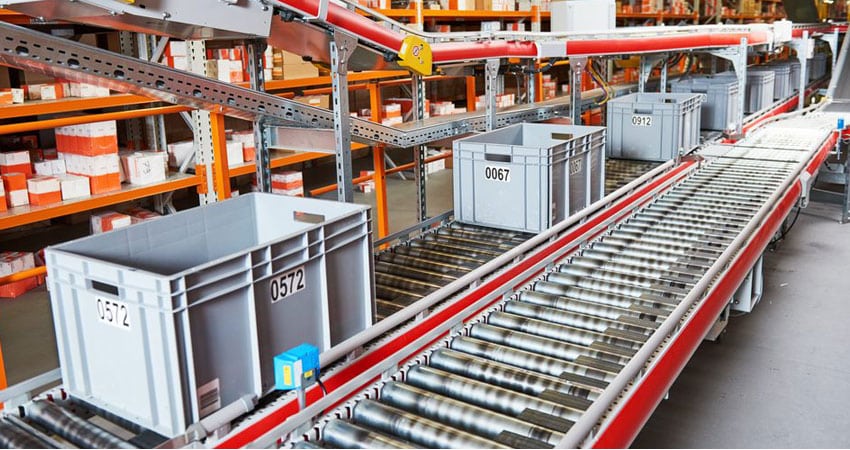Installing automation and conveyance systems in your fulfillment and distribution center is a major capital expense requiring a long lead time. It requires considerable expertise and time to plan and implement these systems properly.
You need to treat fulfillment center automation like concrete. If you want to change it in the future it can become very expensive to move and reinstall. The same is true if the layout and design is not efficient. It may require major downtime for the operations because of redesign and reinstallation.
To avoid some common pitfalls, here are 9 questions to answer as you apply automation to your business:
Who will be the systems integrator?
Selecting a systems integrator is as important as the automation system itself. The integrator will design, implement and project manage your implementation. It’s their responsibility to design and recommend the vendors’ automation and material handling equipment, WMS, WCS or WES software, process control software, project management services, field wiring and other critical components.
Select an integrator that understands your industry. Be aware that many of them will not take on projects which largely involve used equipment because they often receive commissions from manufacturers.
What are your requirements and design goals?
Start the project compiling business requirements for the new fulfillment center automation system and the process. Itemize the details such as active products/SKUs, product storage at peak, orders to be processed and returns. How will channel requirements be different?
In the design process, be sure to state the design objectives the new system need to meet or exceed (e.g. units, cases, pallets per hour) and the growth objectives for the life of the facility. Does the systems integrator guarantee the units of work (e.g. cartons per hour) that the automated system will meet or exceed?
Does the proposed layout make sense?
This includes things like direction of the racking, flow of picks and reduction in pick time achieved. Another major factor is if your business is growing, how will the building and automation need to be logically expanded?
Will the system accommodate future products and categories?
Sounds like a no brainer. But fulfillment and distribution managers are surprised every day with new items merchants pick that are ship-alones or not conveyable. In the proposed solution are there design constraints that limit various product assortments from being considered? This would force the fulfillment process to be different for those items.
How does the system interface with OMS, ERP, WMS?
Are there additional benefits that can be gained from your warehousing systems functions? What process changes will be required? Will you need a Warehouse Control System (WCS) or Warehouse Execution System (WES) to bridge the fulfillment center automation system and other applications?
Can I save money with used equipment?
Racking, pallet jacks, forklifts are one thing but automated conveyance systems are an entirely different proposition. For a major fulfillment center automation system, see the configuration in operation to be sure it meets your needs. If disassembled, it will be extremely difficult to know if it will meet your requirements. Does it come with a warranty? Build contingency costs into the project for unknowns.
Is de-installation of equipment required?
If this has to happen before a new system implementation, it’s a major expense and affects your timeline. Hopefully the sale of existing automation equipment will at least cover the cost of de-installation.
What timeline is realistic?
Allow 12 months to hire a systems integrator, design and plan, purchase and receive the systems components, install and test. Automation will take a couple months to design, plan and purchase. Manufacturing of automation and conveyance equipment can take 8-12 weeks or as long as six months, depending on the complexity.
The implementation itself can take several months. Allow time for testing the automation and interfaces to your information systems. Occupancy can be slowed by construction and local government approval which slows the installation timeline. After go live, allow six months to make any fine tuning to the automation and information systems.
How long until ROI is achieved?
Most CFOs want to see a payback in 18-24 months or less. If the minimum wage goes up to $15.00 or $16.00 per hour in the next couple years, how will this impact your profitability? How will a fulfillment center automation solution help control these costs?
One last point: Get a second opinion about your requirements, the proposed solution, the layout and design, the ROI and the implementation plan. What improvements can you make? Is the automation system over-engineered for the problems being solved? The second opinion may result in a better design.
Brian Barry is President of F. Curtis Barry & Company

